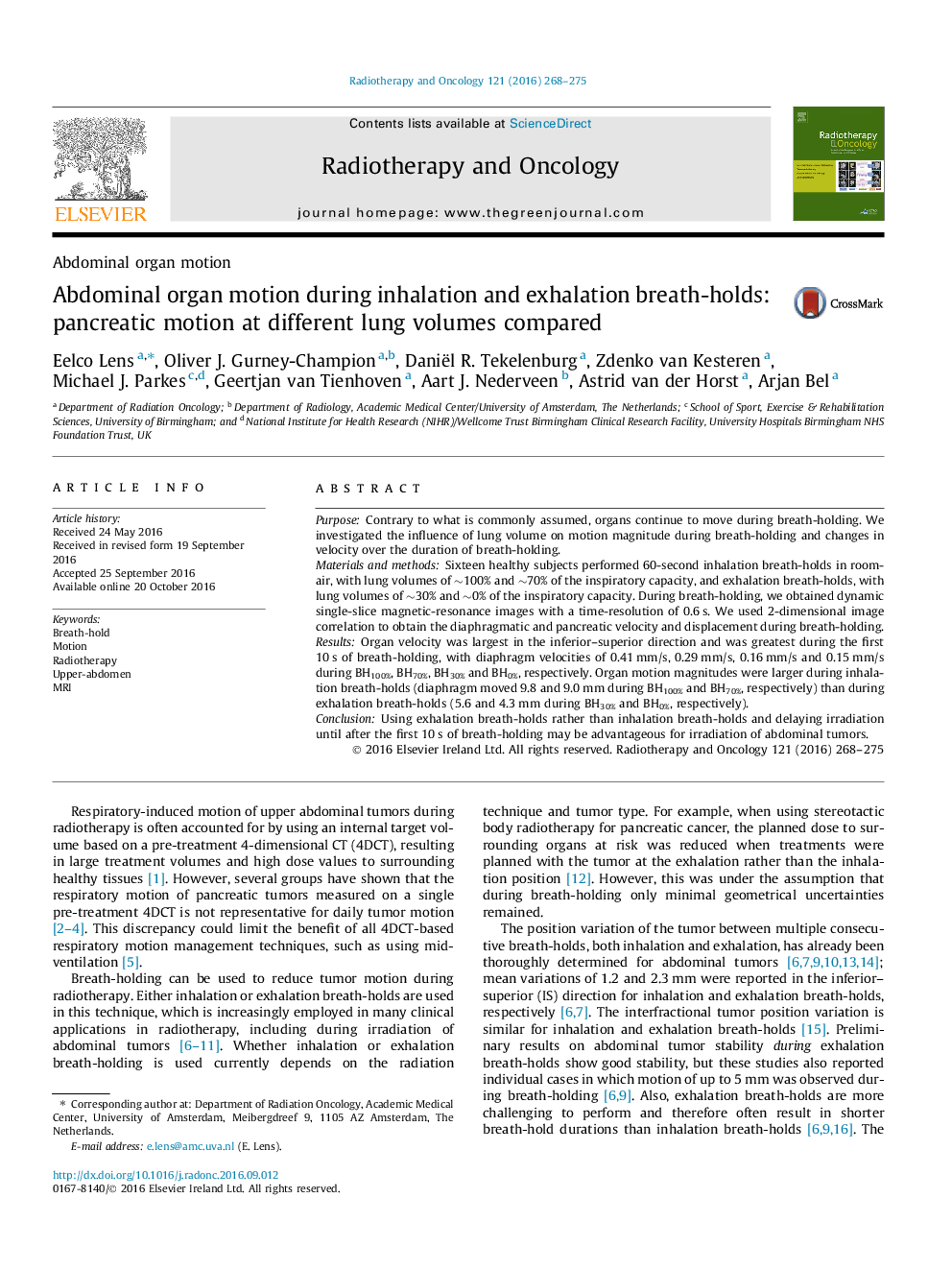| Article ID | Journal | Published Year | Pages | File Type |
|---|---|---|---|---|
| 5529965 | Radiotherapy and Oncology | 2016 | 8 Pages |
PurposeContrary to what is commonly assumed, organs continue to move during breath-holding. We investigated the influence of lung volume on motion magnitude during breath-holding and changes in velocity over the duration of breath-holding.Materials and methodsSixteen healthy subjects performed 60-second inhalation breath-holds in room-air, with lung volumes of â¼100% and â¼70% of the inspiratory capacity, and exhalation breath-holds, with lung volumes of â¼30% and â¼0% of the inspiratory capacity. During breath-holding, we obtained dynamic single-slice magnetic-resonance images with a time-resolution of 0.6Â s. We used 2-dimensional image correlation to obtain the diaphragmatic and pancreatic velocity and displacement during breath-holding.ResultsOrgan velocity was largest in the inferior-superior direction and was greatest during the first 10Â s of breath-holding, with diaphragm velocities of 0.41Â mm/s, 0.29Â mm/s, 0.16Â mm/s and 0.15Â mm/s during BH100%, BH70%, BH30% and BH0%, respectively. Organ motion magnitudes were larger during inhalation breath-holds (diaphragm moved 9.8 and 9.0Â mm during BH100% and BH70%, respectively) than during exhalation breath-holds (5.6 and 4.3Â mm during BH30% and BH0%, respectively).ConclusionUsing exhalation breath-holds rather than inhalation breath-holds and delaying irradiation until after the first 10Â s of breath-holding may be advantageous for irradiation of abdominal tumors.
